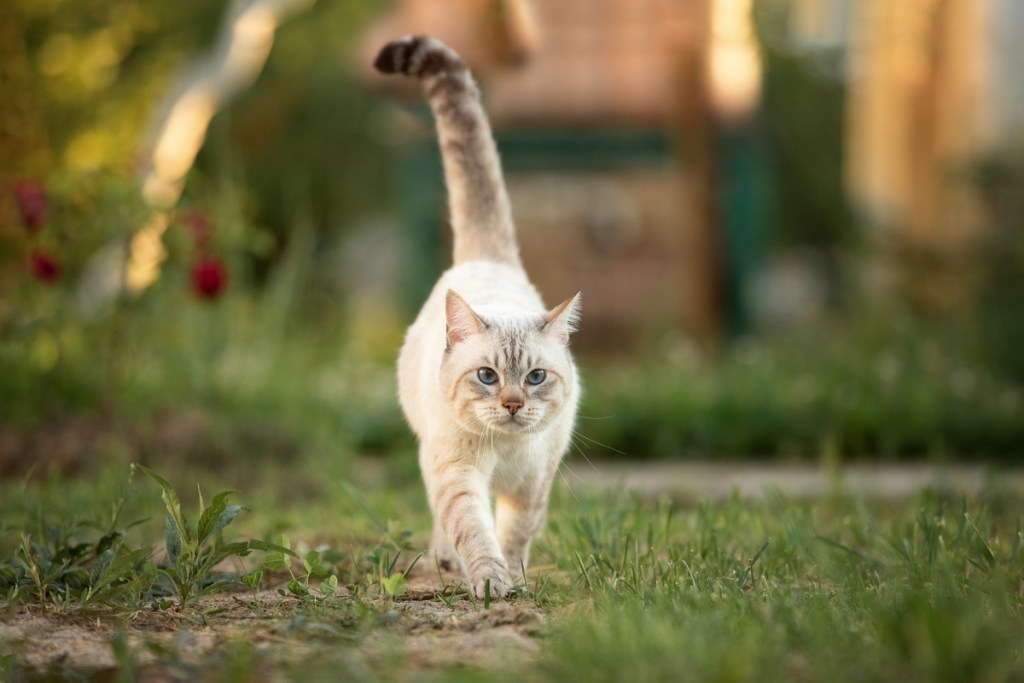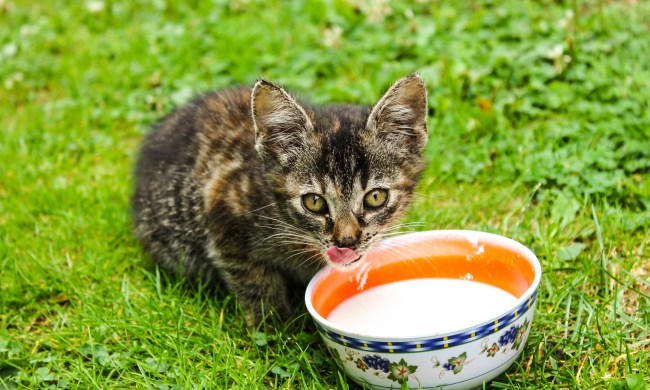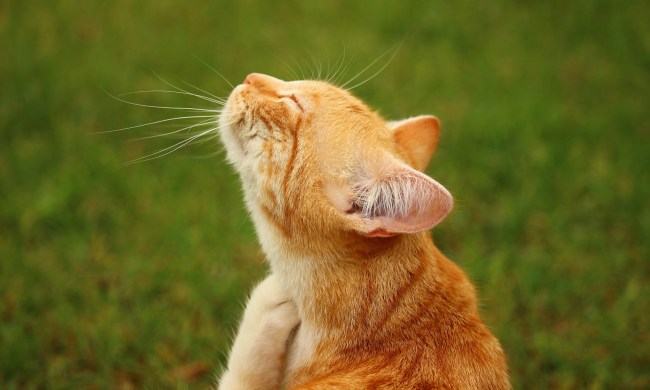Cats may not be able to speak our language, but that doesn’t mean they can’t communicate with us. From their playful chirps to their insistent early morning yowls, our cats are always telling us something. It’s up to us as pet parents to decipher what it is they’re trying to say.
But did you know that even cat tail behavior tells us how our fur babies are feeling? You’re in the right place if you’ve ever wished you had a secret decoder ring that allowed you to understand what your cat wants to say. Here’s a brief rundown of what you need to know about the hidden language of your cat’s tail posture.

What your cat’s tail posture means
Here’s a brief rundown of the most common cat tail gestures and what they mean.
Your cat is holding her tail up high
Just like walking tall indicates confidence in humans, an erect tail means your fur baby feels cool, calm, and collected. You may also see a little swishing going on if your cat feels particularly happy. Feel free to talk to your cat, give her a few chin scratches, and invite her to lie down on your lap when she holds her tail high. However, you should avoid crowding her if your cat’s tail is swishing rapidly. This indicates a fearful or aggressive mood.
Your cat’s tail looks like a question mark
Think of the question mark tail posture as your cat’s way of asking, “Is it time for us to play a game?” You may also see her tongue poking out, but don’t worry. A visible tongue (affectionately called a “blep” by some cat parents) coupled with a curved tail means your cat feels curious and playful.
Your cat’s tail is low to the ground or between her legs
Give your cat some space if you see her tail hanging close to the floor. A sign of fear or aggression, low tail posture means your cat doesn’t feel safe. However, some breeds, like Persians, naturally hold their tails lower. If her tail tucks between her legs, it’s time for some detective work. Your kitty may be responding to ambient noise, like a loud television, or she might have heard a dog barking in the neighborhood.
While every cat has a distinct personality, certain behaviors are common among nearly all of our feline family members. Even your most aloof indoor kitty has probably cuddled up for a nap at some point. Similarly, most cats will race through your house in the middle of the night, meow incessantly when they want food, and curl up in a ball on a sun-warmed patch of the floor. Now that you know more about cat tail behavior, you’ll be able to decode your kitty’s mood before she starts meowing.



